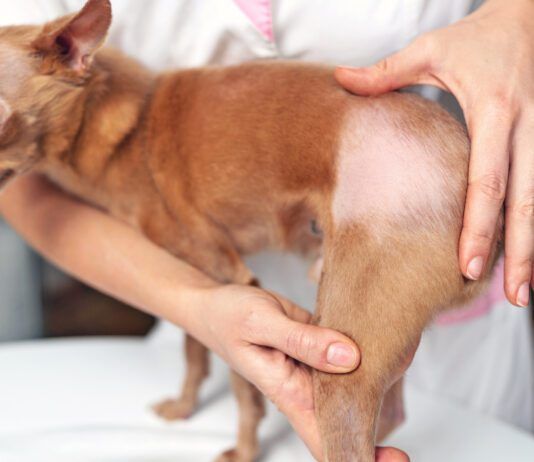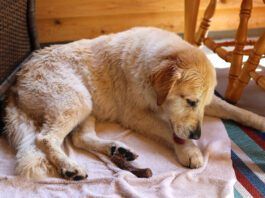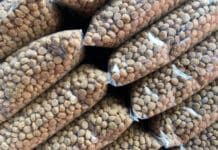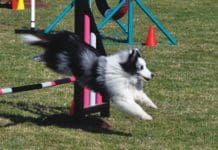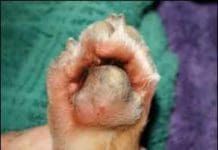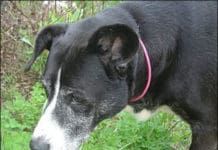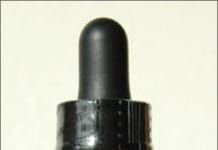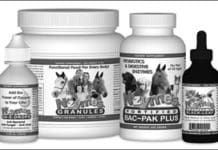Commercial Dog Food For Allergies
Owners who don't feel capable of or willing to carry out a rigorous trial may prefer to try a commercial dog food that has been processed in such a way as to render the proteins hypoallergenic, or one designed specifically for use in an elimination diet. Chances are good that your veterinarian carries at least one of these types of food. Some are limited-ingredient diets, available over the counter; others are prescription diets. All cost around 30 percent more than even the best nonprescription dog foods.
10 Steps to Healthy Skin and a Silky Coat for Your Dog
All dog lovers appreciate seeing a healthy, happy dog, running in the sun with a glistening coat. And it's great to hear, Wow! Your dog's coat is so soft and shiny. How do you do it?" It's wonderful if you are one of the lucky owners whose dog inspires this sort of spontaneous compliment
Identifying and Treating Skin Conditions that can Affect Your Dog
Yikes! What happened to Fido’s nose? And what’s wrong with Fluffy’s paw pads? The possibilities are many, and a surprising number of nose and paw pad problems are related. Because illnesses in this category often have similar or identical symptoms, a veterinarian’s diagnosis can be important. The following overview will help you identify, prevent, or treat these disorders. The most frequently asked questions about dogs’ noses concern color. Dogs have black or dark noses and paw pads because of melanin, a pigment that darkens skin. When melanin production slows or stops, the skin lightens uniformly or in patches. The term nasodigital refers to both nose and toes. A thickening of the outer layer of skin (hyperkeratosis) at the edges of the nose or paw pads can develop into painful cracks, fissures, erosions, and ulcers.
Treating Your Dog’s Corns and Warts
Corns and plantar warts may be common on human feet, but they’re rare in dogs – unless the dog is a Greyhound. This breed is prone to corns. Corns are keratin calluses on the front center paw pads, such as under the second toe bone, which lacks subcutaneous tissue or padding. A common treatment for corns is their removal with a small curette or scalpel, followed by smoothing with a pumice stone and the application of salicylic acid pads or ointments. Roberta Mikkelsen of Pearl River, New York, hoped that hulling (surgical removal) would help her Greyhound, Chip, recover from his painful corns. “This is such a common problem in the breed,” she says, “that there is an online forum where people list the things that did or didn’t help. So far there isn’t a cure.” After Chip’s corn was removed, it grew back.
Canine Allergies: Most Common Causes, Best Tests, and Effective Treatments
Maybe this has happened to you: Youre reading or watching TV or at your computer, and your dog is lying on the carpet near you. Youre absorbed in what you are doing, but all of a sudden, you realize that your dog is licking or chewing himself, or scratching his ear with a hind paw. Hey! you say to your dog. Stop that! Your dog stops, looks at you, and wags his tail. You go back to doing what you were doing and a few minutes later, you hear the tell-tale sounds of licking or chewing or scratching again. Every dog does a certain amount of self-grooming to keep himself clean and every dog owner should be aware of how much is normal, and how much is too much, because too much is often the first indication that a dog is having an allergy attack.
A Canine Allergy Glossary
An Allergen is defined as a substance that causes an allergic reaction. Anything can be an allergen to a hypersensitive individual, even water. The term has meaning only in relation to an individual who is hypersensitive to that substance.
Food Elimination Trial: A Valuable Tool (When Done Correctly)
A valid food elimination trial for the purpose of confirming food hypersensitivity consists of three phases: elimination, challenge, and provocation. In the first (elimination) phase, the dog is fed a diet consisting of a single protein source and a single carbohydrate source. Both of these ingredients should be completely “novel” to the dog – foods he’s never eaten before. (Thirty years ago, lamb and rice was the go-to food elimination diet, because those ingredients were not yet widely available in commercial pet foods. Because the diet was novel, few dogs had developed allergies to those ingredients, and “lamb and rice” gained an unearned reputation as a “hypoallergenic” diet.
When It Comes to Allergy Tests, Some Dogs Flunk
There are a few different types of tests available that purport to identify the allergens to which a dog is hypersensitive; some of them are helpful, and some are a waste of time and money. Since all of them are commonly referred to as allergy tests
Bee Products Have a Special Meaning for Dogs
Bees may sting, but they create some of the world's most valuable, versatile products. Honey, bee pollen, royal jelly, beeswax, propolis, and even the venom from bee stings are all touted for their human health benefits and many experts say that dogs derive the same advantages.
Canine Allergies and Your Dog’s Health
or anything else.üBonnie's sores healed when her owner noticed her eating fresh cleavers, and started giving the dog supplemental forms of the herb.
Ways to Use Lemon Balm on Dogs
Next month, on May 6, the first day of National Herb Week, lemon balm (Melissa officinalis) becomes Herb of the Year for 2007. A dog-friendly plant with a distinctive lemon-mint fragrance and flavor, lemon balm is best known as a nervine, a calming herb that soothes and relaxes. It's also a digestive aid that neutralizes gas in the stomach and intestines.
Yeast Infections in Dogs
Thirty years ago, even though the systemic yeast infection called candidiasis had already become an epidemic, practically no one knew anything about it. Even now conventional medicine tends to ignore the problem, but word has spread among health-conscious consumers. If you haven't had a candida yeast infection yourself, you know dozens of people who have and dozens of dogs as well.


